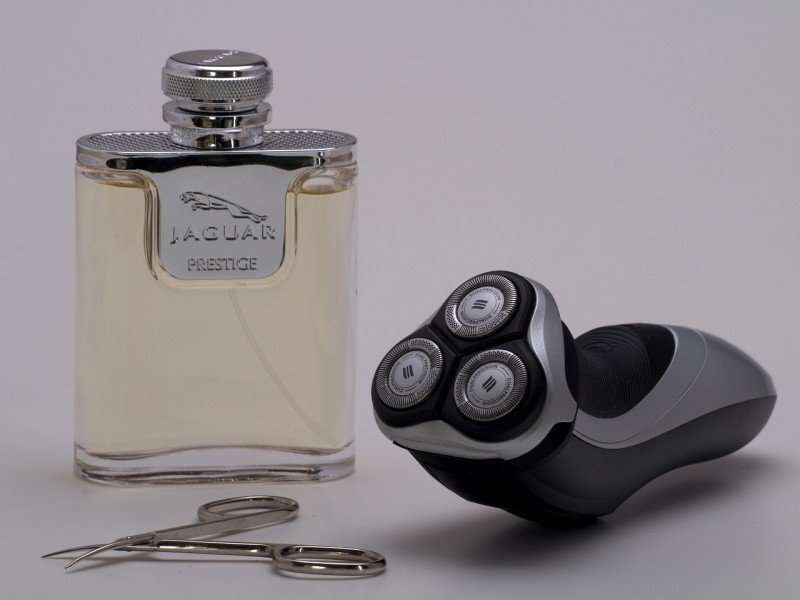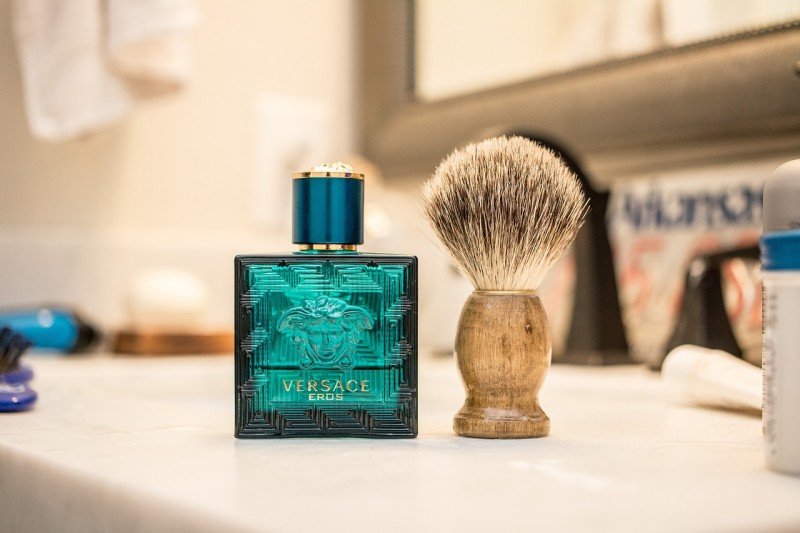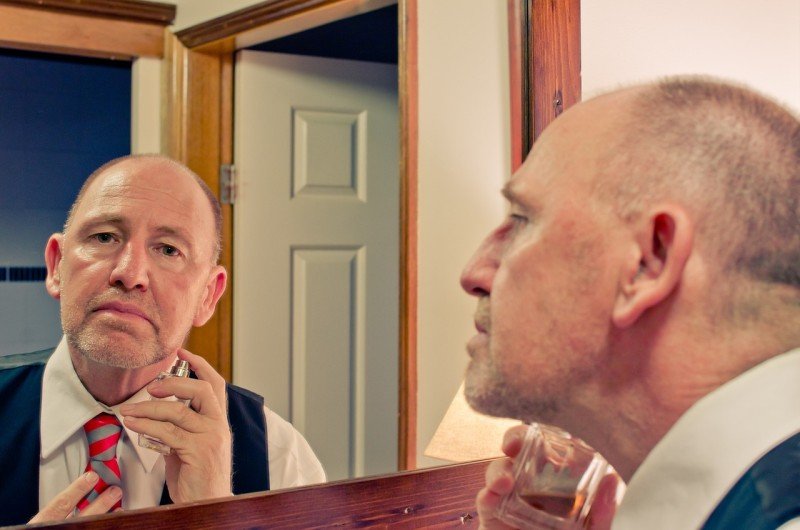Ever wondered why your shave isn't as smooth as you'd like? The secret may lie in exfoliation. It's not just about swiping a razor across your face. You're missing a crucial step: exfoliating.
This simple, often overlooked routine can make all the difference, opening hair follicles and ridding your skin of grime.
So, let's dive into the world of exfoliation and discover how it can help you achieve that clean, sharp shave you've been craving.
Key Takeaways
- Exfoliating before shaving removes dead skin cells and opens up hair follicles, resulting in a smoother and closer shave.
- It reduces the chances of ingrown hairs, razor burn, and bacterial invasion.
- Exfoliation helps to unclog pores and remove grime and dirt from the skin, improving the quality of the shave.
- By lifting the hair and reducing skin sensitivity, exfoliation can help to prevent razor bumps.
Understanding the Role of Exfoliation in Shaving
You might be wondering how exfoliation plays a part in getting that smooth shave you're after. Well, let's debunk some exfoliation myths first.
It's often believed that exfoliation might cause skin irritation and increase the chances of nicks and cuts. However, the truth is that exfoliation before shaving can actually help you. It removes the layer of dead skin cells, making your skin smoother and allowing your razor to glide effortlessly.
The benefits of exfoliation, therefore, are undeniable. It unclogs pores and lifts hair follicles, reducing the chances of ingrown hairs and razor burn.
How Exfoliation Opens Up Hair Follicles
Before we broach the topic of how exfoliation impacts the shaving process, it's crucial to comprehend the basic function of hair follicles.
As you exfoliate, you're not just removing dead skin cells, you're also opening up these hair follicles. This process is vital for a cleaner shave, and we'll discuss why in the upcoming sections.
Understanding Hair Follicles
Let's delve into the mystery of hair follicles and how exfoliation can help open them up, enhancing the effectiveness of your shave. Understanding follicle health is key in fostering optimal hair growth.
Here's a simple table to help you understand the relationship between exfoliation, follicle health, and hair growth:
| Follicle Health | Exfoliation | Hair Growth |
|---|---|---|
| Healthy follicles produce strong hair | Removes dead skin cells | Stimulated by blood flow |
| Clogged follicles hinder hair growth | Opens up hair follicles | Healthy follicles mean better hair growth |
| Exfoliation aids in follicle health | Helps in better absorption of products | Exfoliation can stimulate growth |
Exfoliation Process Basics
While it's beneficial to understand the role of exfoliation in promoting follicle health, it's equally important to grasp the basics of the exfoliation process itself and how it works to open up your hair follicles. Exfoliation techniques involve the removal of dead skin cells from the surface of your skin. When you exfoliate, you're clearing away these dead cells and making room for the new ones to thrive, ultimately opening up your follicles.
One highly recommended product for this purpose is a scrub with fine grains. Use it in a gentle, circular motion, and it'll reduce the likelihood of ingrown hairs by allowing a more direct pathway for them to grow. Remember, consistency is key to achieving a cleaner, smoother shave when it comes to exfoliation.
Exfoliation and Shaving
Even though you might not realize it, when you exfoliate before shaving, you're actually helping to open up your hair follicles for a cleaner, smoother shave. This is because exfoliation products work to remove dead skin cells, revealing the new skin underneath and allowing hair to stand up straighter for a closer cut.
Here's a simple table to illustrate how exfoliation helps in shaving:
| Exfoliation Step | Its Effect on Shaving |
|---|---|
| Removes dead skin cells | Makes skin smoother for the razor to glide |
| Reveals new skin | Allows hair to stand up straighter for a closer cut |
| Opens up hair follicles | Helps the razor to reach and cut hair from the base |
The Importance of Skin Preparation Before Shaving
You can't underestimate the importance of proper skin preparation before you start to shave. By integrating pre-shave products into your regimen and utilizing effective shaving techniques, you're setting the stage for a smoother, cleaner shave.
Pre-shave products, such as oils and lotions, soften your skin and hair, making them easier to cut. They also create a slick surface for your razor to glide over, reducing the risk of nicks and irritation.
Shaving techniques also play a crucial role in skin preparation. For instance, properly lathering and applying your shaving cream can elevate your shaving experience. Paying attention to the direction of hair growth and adjusting your strokes accordingly can help prevent ingrown hairs.
The Effect of Exfoliation on Grime and Dirt
Let's consider the role of exfoliation in removing grime and dirt from your skin. When you exfoliate, you're clearing away the debris layers that can inhibit a close shave.
Understanding how this process impacts your shaving routine can elevate your daily grooming to a whole new level.
Exfoliation Removes Grime
In the pursuit of cleanliness, exfoliating before shaving can help you remove the stubborn grime and dirt from your skin. The exfoliation benefits are manifold, especially when it comes to tackling grime sources.
Here's how it works:
- Exfoliation removes dead skin cells, revealing a cleaner layer of skin underneath.
- Dirt and grime, often trapped in the pores, are cleared out during the process.
- This cleaner skin surface results in less friction when shaving, reducing the risk of nicks and cuts.
Dirt's Impact on Shaving
There's no denying that even a small amount of dirt can significantly impact your shaving experience. Dirt accumulation effects range from causing skin irritation to dulling your razor blades. This, in turn, requires more strokes to achieve a clean shave, increasing the risk of cuts and nicks.
Exfoliating before you shave is a strategy that combats this issue. It removes grime, oils, and dead skin cells, providing a cleaner surface for your razor. Not only does this improve the quality of your shave, but it also plays a role in bacterial invasion prevention.
When you exfoliate, you're reducing the bacteria's potential breeding grounds, lowering the risk of infection. So, in essence, pre-shave exfoliation isn't just about the appearance. It's also a matter of good hygiene and skin health.
Reducing Razor Bumps Through Exfoliation
You'll notice a significant decrease in razor bumps when you include exfoliation in your pre-shaving routine. Exfoliation products work by removing dead skin cells that would otherwise clog your pores and increase skin sensitivity. This process also lifts your hair, allowing for a closer, cleaner shave.
To maximize the benefits of exfoliation, follow these steps:
- Choose an exfoliation product that suits your skin type. If you have sensitive skin, avoid products with harsh chemicals.
- Apply the product gently in a circular motion. This action lifts the hair and removes dead skin cells.
- Rinse your skin thoroughly before you start shaving to ensure no residue is left.
Achieving a Cleaner Shave: The Exfoliation Factor
Before stepping up to your shave routine, consider exfoliating for a smoother skin surface, and you'll find that this small addition can make a huge difference to your overall shaving experience. Exfoliation products help remove dead skin cells and exposing the hair follicles, allowing for a closer and cleaner shave. They're easy to use and integrate into your pre-shave regimen. Regular use means you'll notice fewer ingrown hairs and a more comfortable shave.
But don't stop there. Aftershave care is equally essential. Applying a soothing, hydrating lotion or balm after shaving can help restore your skin's moisture balance and reduce irritation. Achieving a cleaner shave isn't just about the act itself but also about the care that follows.
Frequently Asked Questions
How Often Should Men Exfoliate Their Skin Before Shaving?
Depending on your skin type, You should exfoliate 2-3 times a week. Exfoliating benefits men by removing dead skin cells and prepping the skin for a smoother, cleaner shave.
Can Exfoliation Help Reduce Acne Breakouts?
Yes, exfoliation can help reduce acne breakouts. Exfoliation benefits your skin by removing dead cells and preventing pore clogging. Regularly incorporating it into your skincare routine can significantly aid in acne prevention.
What Are Some Recommended Exfoliation Products for Men?
You're asking about exfoliation products for men. Considering exfoliation's impact on skin health, I'd suggest natural methods like a sugar scrub or a brush with firm bristles. They're effective and promote skin health.
Is There a Specific Technique to Exfoliate Properly Before Shaving?
Absolutely, proper exfoliation technique is essential. You should exfoliate gently, in a circular motion, avoiding harsh scrubbing. Consider your skin's sensitivity and exfoliation timing, ideally doing it before shaving for the best results.
Can Exfoliation Help With the Issue of Ingrown Hairs?
Absolutely, exfoliation can help with ingrown hairs. It's one of the top exfoliation benefits. It clears away dead skin, allowing hairs to grow freely, reducing their chance of being trapped and ingrown.


